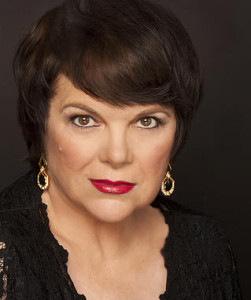By Jeff Nishball
Cole Porter’s classic Anything Goes can be heard in cabarets around the world, its lyrics presenting a loosey-goosey world, where rules and structure be damned. But when it comes to cabaret performance, anything, in fact, does not go. There are a few guidelines a performer should follow, and some definite No-No’s.
I recently chatted with two cabaret veterans to get their take: 2014 and 2012 Bistro Award and 2014 MAC Award winner Billie Roe; and 2013 MAC Award and 2010 Bistro and MAC award-winning performer, director and teacher Gretchen Reinhagen. They shared with me some of their performance No-No’s.
Lacking a clear point of view
You’ve chosen a beautiful song by a brilliant composer and you can’t wait to sing it Friday night at The Metropolitan Room. But, have you first answered that all-important question—Why are YOU singing it? If not, you may be committing the first cardinal sin of cabaret performance. According to Roe, when choosing a song you must always start by asking, “What are you attempting to convey emotionally to an audience?” Not having an answer to this could produce a performance full of sound and fury, signifying nothing. Roe elaborated, “Don’t just sing the song. Live and share the song in the moment, which is what creates the intimacy of cabaret to begin with.” Reinhagen echoed these sentiments. “You need to ask yourself why is someone coming to see you as opposed to someone else? What are YOU bringing to it? It has to have your own specific and individual point-of-view. Nobody else should be able to do your entire set list, and do your patter, and recreate your show.”
Not being true to your own unique vision
Creating a new show is a daunting endeavor, and the need to please and accommodate others expectations can be overwhelming. But Reinhagen warned against falling into that trap. “Don’t build your show based on what you think other performers, reviewers, or friends are expecting you to do. And it shouldn’t be a template of someone else’s show. It still has to be your unique point of view. Don’t sell yourself short. Trust that you do have something to say.” Remember, you’re putting this show together for your own reasons and artistic expression, not someone else’s.
Singing with your eyes closed
“Drives me nuts!” is all Roe had to say about this. Performing is about connecting with an audience, not with the back of your eyelids. Let them see the emotion expressed through your eyes. So, unless you’re alone meditating, best to keep your eyes open. Reinhagen agreed and added a couple of her own comments. “Don’t look down. As soon as you look down you lose your audience. You also don’t want to give everything up to the sky either.” The bottom line for Reinhagen: “Don’t deliver the song to someone who isn’t there.”
Being a singing stalker
We’ve all seen it. Perhaps even been on the receiving end of it. The performer who sings an entire song directly to one particular person in the audience, “with eyes fixed or glazed like some kind of crazy person,” as Roe put it. The recipient of this targeted song-stalking attention is made to squirm in his or her seat for three and a half uncomfortable minutes. “Hey, I don’t want to be your acting partner,” Roe said. “I want to experience your gifts, not help you create the moment.” So build the moment from within and then spread the love around.
Referring to a set list on the piano
Reinhagen said, “Referring to a set list tells the audience that you’re not fully prepared.” Let me just take a moment here to see what song comes next. No, I have rehearsed, I swear. I really do know my own show. Roe agreed, “Following a set list on the piano tells me the performer probably needed more rehearsal. Which, granted, in the New York market is costly, but hey, it’s your show!” It comes down to the image you want to project: prepared and confident or unsure and unrehearsed.
No patter in a show
Song after song after song after song after song, without a single break. Oy! Not one spoken word that doesn’t contain a melody and musical accompaniment. Remember to take a musical break every now and then and chat with the audience. Let them see you’re a fully rounded performer and there’s more to you than just your amazing voice. Roe said that this is a common mistake; if we wanted to hear uninterrupted song after song, we’d just stay at home and listen to a CD. We’re here, in this room, paying our 2-drink minimum to experience your show and a full performance that we can’t get from a recording—and that means engaging with the audience.
Too much patter in a show
This is the B-side to no patter. Performers who drone on endlessly after every song, while, Roes says, the audience is thinking, “Geez, why don’t they just shut up and sing already? We want to hear them sing, not TALK.” Reinhagen’s take on this: “There’s not a black and white on too much or not enough patter. It’s not a one size fits all. You must know your audience. You want it to be personal, but you don’t want to over share and make them uncomfortable. It can be tricky; regarding finding the proper balance, Roe offered this final piece of advice, “It’s important to find a happy medium, which is why God created directors.”
Bad mic technique
This can be especially troubling with singers who have big voices. Belting out that big note while wine glasses, as well as eardrums, begin to shatter. Or pulling away too far and the audience is straining to hear that lovely gentle tone of yours. Roe advises, “Before each engagement, always ask the technical director about the actual mic you will be performing with. That’s why they’re there—to set your levels and help you. It amazes me how many singers never ask.” Roe’s emphatic instruction: “Learn how to use a mic!” Enough said.
Not testing out your material
Performance is not a place to test things out. Don’t wing it. Take your material out for a spin. Find out which songs fit and which don’t. Roe implored, “Go! Go! Go to open mics. Audiences are savvy and can give you great feedback, which is so very helpful if you’re considering a song for an upcoming act or performance. I learn something about my song every time I go!”
Being too literal
Some performers’ penchant for over-explaining irks Reinhagen. “Some singers get stuck in a box and think, ‘I can’t give you this info and sing this song unless I explain these three things that happened the year before.’ Don’t assume your audience is dumb. Don’t be too literal. They’re going to make the leap with you. You don’t need to explain everything.”
Introducing a song by telling us why you’re singing it
Reinhagen said to “avoid saying things like ‘and this next song is…This song makes me feel…I’m singing this because…’ You don’t want to give away what you’re going to express in the song.”
Doing a production of Hair
This is particularly important for those with long locks or dangling curls, and is one of Reinhagen’s pet peeves. “Don’t let your hair constantly fall in your face. It’s very distracting and it interferes with your connection to the audience.” So, be aware of your hair and tame the mane.
Not having fun
Cardinal rule number two: The audience will have fun only if you’re having fun. So leave all that hard work and focused intensity in rehearsal; performance is the time to let loose and have fun. Roe’s counsel: “Enjoy your gifts you share on stage. Be brave! Make bold choices! Dare to think outside of the box. After all, when you consider all the time, money, blood, sweat and tears you spend working on this act—this labor of love—for goodness sake have fun with it, and allow yourself time to grow and learn, and learn more. One thing I know, there’s no greater reward than creating and producing your own cabaret show. As our beloved Sidney Myer says, ‘Why, it’s creating magic out of thin air!’”






